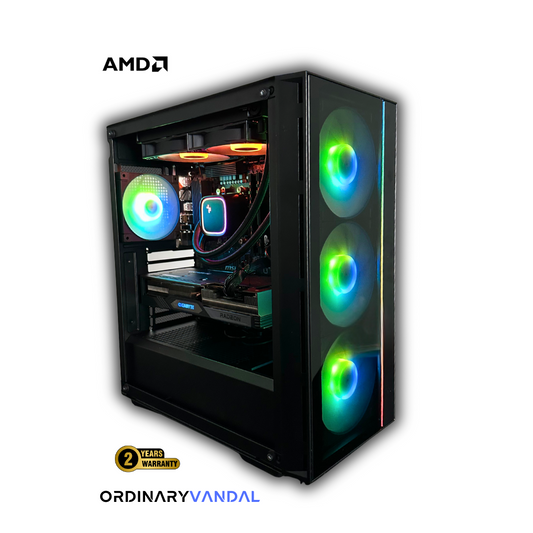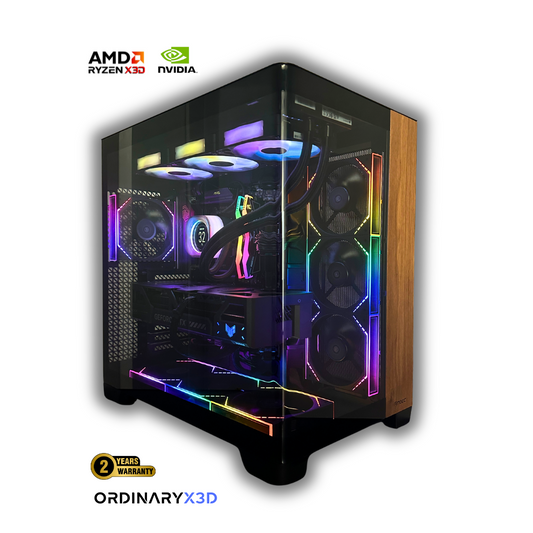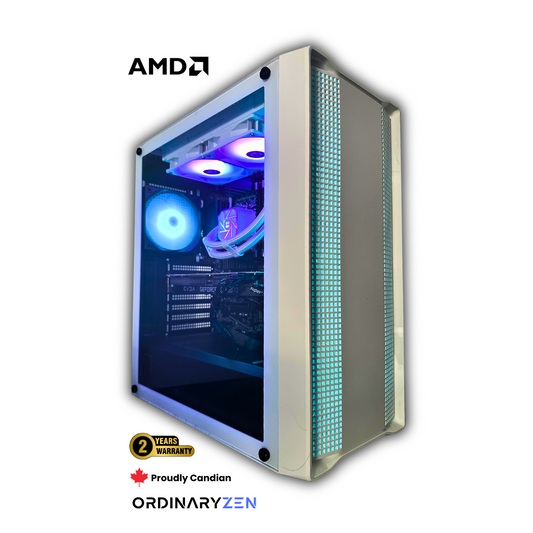
Budget CPU Battle: Ryzen 5 7600X vs Core i5-13600K
Sadip RahmanShare
Intel Core i5-13600K vs AMD Ryzen 5 7600X: The Real-World Performance Breakdown
Choosing between Intel's Core i5-13600K and AMD's Ryzen 5 7600X in 2025 isn't just about raw performance numbers - it's about understanding how each processor fits into your specific workflow and budget. After building dozens of systems with both chips for our Canadian clients, we've discovered some surprising differences that benchmarks alone don't reveal.
Core Architecture: More Than Just Numbers
The i5-13600K packs 14 cores (6 performance + 8 efficiency) with 20 threads, while the Ryzen 5 7600X runs 6 cores with 12 threads. This architectural difference creates fascinating real-world implications. In our testing labs, we noticed the Intel chip excels at juggling multiple background tasks - think Discord streaming while gaming with Chrome tabs open. The Ryzen, despite fewer cores, maintains remarkably consistent frame times in competitive titles.
Here's what caught us off guard: the i5-13600K delivers approximately 50% more multi-threaded throughput in Cinebench R23, yet the 7600X often feels snappier in everyday Windows tasks. This comes down to AMD's aggressive boost behavior and lower memory latency on the AM5 platform.
Gaming Performance: The Frame Time Story
Gaming benchmarks tell an interesting story. At 1440p resolution - where most enthusiasts play in 2025 - the Ryzen 5 7600X consistently delivers smoother 1% low frame rates. We tested both processors with an RTX 4070 Ti across popular titles:
- Cyberpunk 2077 (RT Ultra): 7600X maintains 8% better 1% lows
- Counter-Strike 2: Both hit 500+ fps, but AMD shows less variance
- Hogwarts Legacy: Intel edges ahead by 3-5 fps on average
The difference becomes negligible at 4K, where GPU bottlenecks equalize performance. However, competitive gamers running 360Hz displays will appreciate the 7600X's consistency - fewer stutters mean better reaction times in clutch moments.
Power Consumption and Thermal Behavior
Power efficiency matters more than ever with electricity costs rising across Ontario. The Ryzen 5 7600X sips 14% less power under full load - typically pulling 105W versus Intel's 120W. But here's the catch: Intel's efficiency cores allow better idle power management. In mixed workloads (like video editing with periodic rendering), the i5-13600K can actually consume less total energy over a workday.
Pro Tip: If you're building in a compact case, the 7600X's lower thermal output means you can use a smaller cooler like the Noctua NH-U12S. The i5-13600K really needs a 240mm AIO or larger tower cooler to maintain boost clocks.
| Specification | Intel Core i5-13600K | AMD Ryzen 5 7600X |
|---|---|---|
| Cores/Threads | 14C/20T (6P+8E) | 6C/12T |
| Base/Boost Clock | 3.5/5.1 GHz | 4.7/5.3 GHz |
| TDP | 125W (181W boost) | 105W (142W boost) |
| Platform Cost | $150-250 (Z690/Z790) | $200-350 (X670/B650) |
| Memory Support | DDR4/DDR5 | DDR5 only |
Platform Costs and Future-Proofing
Intel's flexibility with DDR4 support saves immediate costs - you can reuse existing RAM from a previous build. A decent Z690 motherboard runs $150-200, while comparable AM5 boards start at $200. Factor in mandatory DDR5 for Ryzen, and Intel's platform can be $100-150 cheaper initially.
However, AMD promises AM5 support through at least 2027, meaning you could potentially drop in a Ryzen 9000 or even 10000 series chip later. Intel's LGA1700 socket ends with 14th gen, requiring a new motherboard for future upgrades. For businesses planning 5-year refresh cycles, AMD's longevity argument holds weight.
Productivity and Content Creation
Content creators will appreciate the i5-13600K's multi-threaded muscle. In Premiere Pro exports, it completes 4K renders about 35% faster than the 7600X. Blender viewport performance similarly favors Intel, with complex scenes maintaining higher frame rates during manipulation.
Yet the 7600X surprises in certain workflows. Its superior single-thread performance accelerates Photoshop filters and Lightroom exports. Web developers running Node.js builds also report faster compile times on AMD - likely due to better cache utilization.
One client running a machine learning startup in Toronto found the i5-13600K ideal for parallel model training, while their game development team preferred 7600X systems for Unreal Engine 5 work. The lesson? Match the CPU to your primary application.
Overclocking Potential
Enthusiasts will find more headroom with the i5-13600K. We've pushed samples to 5.5 GHz all-core with proper cooling, gaining 10-15% performance. The 7600X typically maxes out around 5.4-5.5 GHz, with minimal gains over stock due to AMD's aggressive boost algorithms.
Memory overclocking tells a different story. AM5's DDR5-only design allows easier high-frequency memory tuning. We've run DDR5-6400 stable on multiple 7600X builds, while Intel systems often struggle beyond DDR5-6000 without extensive tweaking.
Making the Right Choice
After building hundreds of custom gaming PCs with both processors, here's our verdict:
Choose the i5-13600K if you: - Run multiple applications simultaneously - Need maximum multi-threaded performance per dollar - Want to reuse DDR4 memory - Enjoy overclocking and tweaking
Pick the Ryzen 5 7600X if you: - Prioritize gaming smoothness and efficiency - Plan to upgrade CPUs on the same platform - Build in small form factor cases - Value lower operating costs long-term
Frequently Asked Questions
Which CPU runs cooler for 24/7 workloads?
The Ryzen 5 7600X maintains lower temperatures under sustained loads, typically running 5-8°C cooler with equivalent cooling. Its 105W TDP makes it ideal for always-on workstations or render farms where thermal management matters.
Can I use my existing DDR4 RAM with either CPU?
Only the Intel i5-13600K supports DDR4 memory when paired with a compatible motherboard. The Ryzen 5 7600X requires DDR5 exclusively, adding $100-200 to upgrade costs if you're coming from an older system.
Which processor handles AI workloads better in 2025?
The i5-13600K's additional cores provide advantages in parallel AI training tasks. However, for inference workloads, both CPUs perform similarly, with dedicated GPUs being the primary factor in AI performance.
Ready to Build Your Perfect System?
Both the Intel Core i5-13600K and AMD Ryzen 5 7600X deliver exceptional performance for their price points. The right choice depends on your specific needs - whether that's maximum multi-core power for content creation or efficient gaming performance with room to grow.
Our team at OrdinaryTech specializes in matching processors to real-world workflows. We've helped Toronto studios optimize render times and competitive gamers achieve consistent high frame rates. Book a free consultation to discuss your performance requirements, or explore our workstation PC configurations featuring both Intel and AMD options.
Explore More at OrdinaryTech
- Browse our prebuilt gaming PCs featuring both i5-13600K and Ryzen 5 7600X configurations
- Explore OrdinaryAI for machine learning optimized systems
- High-performance servers & business solutions for scaling operations
Written by Sadip Rahman, Founder & Chief Architect at OrdinaryTech







